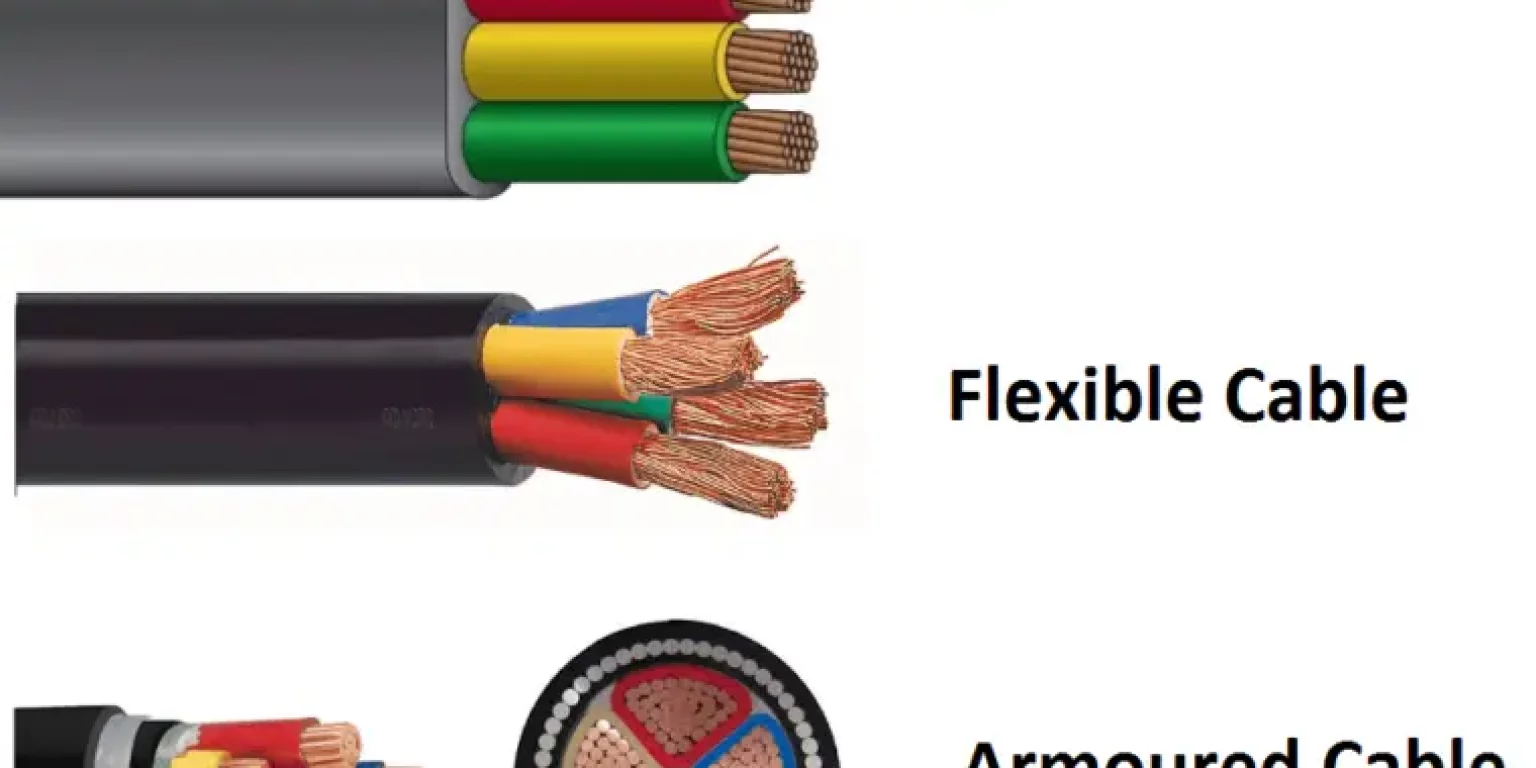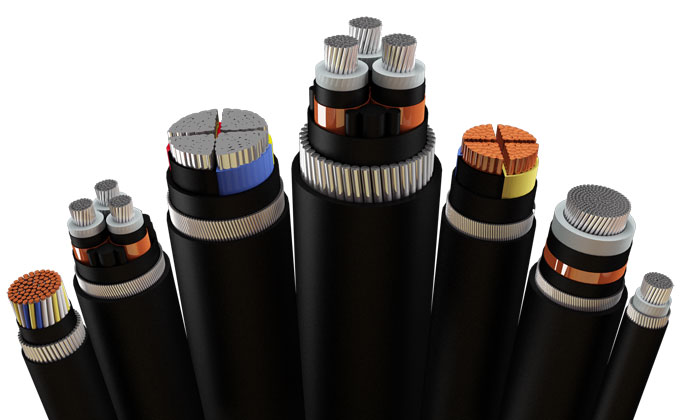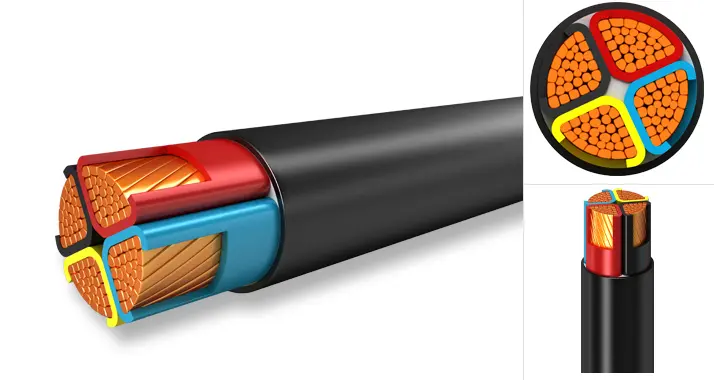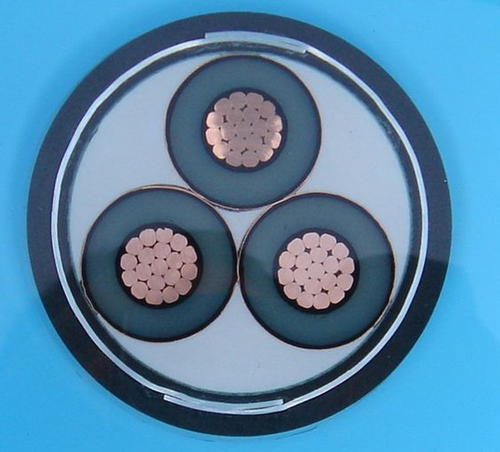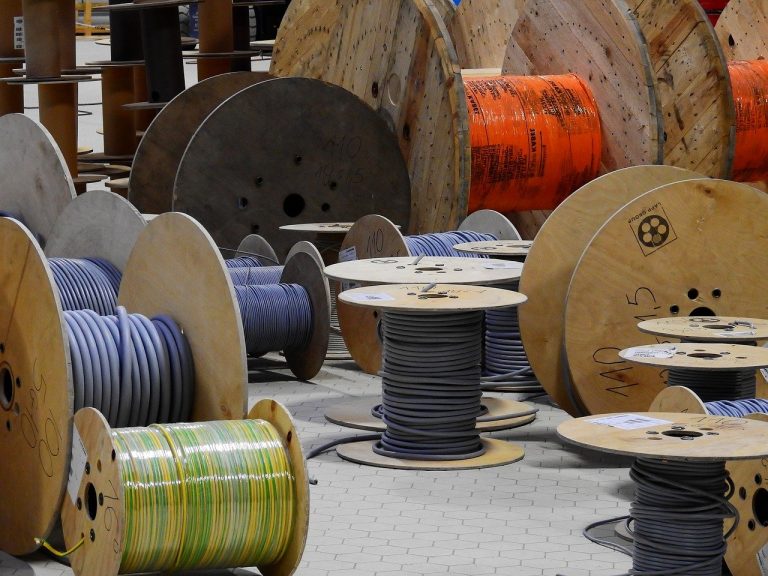A power cable is a type of electrical cable used to transmit electricity. Power cable types composed of a conductor ( typically made of copper or aluminum) and an insulation layer. Typically, the electrical power cable is installed in buildings and other structures to supply electricity.
Nonelectrical power cable types are also used for other purposes, such as connecting portable devices and aerial bundled cables (ABC) for overhead power lines. There are different power cables types based on their intended application, conductor material, insulation material, and cross-sectional area. This blog post will get you to know the common power cables types and where to discover the right one for your requests.
Figure 1: Power Cable Types
What are the types of power cables?
Considering the various types of power cables is essential for several reasons. It can help you better understand each type’s capabilities and limits. Additionally, knowing the different power cables types can also aid in troubleshooting should an issue ever arise. Electrical power cable types are classified as:
These are compatible with 0.6/1KV electricity systems. PVC-insulated cable is the most popular low-voltage wiring type. Copper or aluminum is used as the conductor. Low voltage cables are often used in homes and businesses, including powering lights, outlets, and appliances.
Typically, low-voltage cables are made from copper or aluminum. The former is a more expensive option but is also more durable and has better electrical conductivity. On the other pointer, aluminum is less pricey but not as durable and has poorer electrical conductivity.
As the name implies, medium voltage cables are designed for use with systems with a voltage of between 600 and 69,000 volts. The most common medium voltage cable type is XLPE, which stands for Cross-Linked Polyethylene. Medium voltage cables are typically used in industrial applications, such as powering large motors or connecting different buildings.
Medium voltage standard power cable types are usually high-quality copper or aluminum. These metals are used because of their excellent electrical conductivity and resistance to corrosion. The electrical current flowing through the medium voltage cable produces a lot of heat, so the copper or aluminum must be able to withstand these high temperatures.
High voltage cables are designed for use with systems with 69,000 volts or more. The most common high voltage cable type is EPR, which stands for Ethylene Propylene Rubber. High voltage cables are used in utility applications, such as connecting power plants to substations. These power cables have extensive use in industries.
Industrial power cable types are usually high voltage cables. The main reason for this is that the higher the voltage, the less electrical current is required to power the same amount of equipment. This means less heat is generated, making it easier to manage and control. Another reason why high voltage cables are used in industrial applications because they are less likely to experience power outages.
Flexible power cable types are designed to be used in applications where the cable needs to be bent or twisted. The most common flexible cable type is PVC, which stands for Polyvinyl Chloride. Flexible cables are often used in electronic equipment, such as laptops and cell phones.
The flexibility needs to be considered when selecting the type of metal to use. If the application requires a lot of flexibility, then a metal with a lower modulus of elasticity, such as copper, is typically used. If the application does not require as much flexibility, a metal with a higher modulus of elasticity, such as steel, can be used.
What Cable type is used for underground power distribution?
In most cases, these cables are run underground in conduit to protect the cable and prevent electrical interference. The power cable types are divided into categories to define the maximum voltage and current they can carry. The two most common power cable types are:
An armoured cable is a type of power cable that is enclosed in a metal sheath. The metal sheath protects the cable from physical damage and electrical interference. Armoured cables are typically used in industrial applications, such as powering large motors or connecting different buildings.
The most common type of armoured cable for underground power line cable is the direct burial armored cable. It is designed to be buried directly in the ground without the need for any additional protection. The armored layer provides protection against physical damage and the insulation protects against electrical shorts.
- Underground Power Cable:
Underground power cables are designed for buried conduit or direct burial applications. The most common underground power cable type is URD, which stands for Underground Residential Distribution. URD cables are used to connect homes and businesses to the electrical grid.
The composition of underground power cable types includes a conductor, insulation, and a protective jacket. The conductor is typically made from copper or aluminum, and the insulation is generally made from polyethylene or cross-linked polyethylene. The protective jacket protects the cable from physical damage, chemical corrosion, and electrical interference. These make a durable and reliable power underground power cable that can last for many years.
What is a power cable made of?
Power cables or electricity cables usually have three main components. Manufacturing methods and materials used in each of these components vary according to the type of power cable. The three main features are:
Conductor:
The conductor is the part of the power cable that carries the electrical current. The conductor is usually a metal part made from different materials. A power cable used to connect two buildings will have a different conductor than a power cable used to connect a computer to a printer.
The conductor is the most critical part of the power cable, and its primary purpose is to carry the electrical current from one point to another. The conductor is often called the “live” part of the power cable because it maintains the electrical current.
Insulation:
The insulation is the part of the power cable that surrounds the conductor and prevents electrical current from flowing through it. The insulation is usually made from a non-conductive material, such as plastic or rubber. The type of insulation used in a power cable depends on the application.
Factors that consider while choosing an insulation material for power cable types include
- Temperature,
- Chemical resistance,
- Fire resistance.
The insulation is often called the “dielectric” part of the power cable because it prevents the electrical current from flowing through it.
Jacket:
The jacket is the outermost part of power cable types, and it protects the insulation and conductor from physical damage. The jacket is usually made from a durable material, such as PVC or polyethylene. The type of jacket used in a power cable depends on the application.
Choosing a jacket material resistant to physical damage, chemical corrosion, and electrical interference is essential. The jacket is frequently denoted as the ” armor” or “sheath.”
Where to buy power cable?
Finding a trustworthy and reliable manufacturer and the supplier is critical for the success of your project; turn to ZW Cable. We are a leading global provider of power cable types and cable systems for power and data transmission. We bid on a wide array of products, providing technical support and custom solutions to meet your specific needs.
After partnering with us, you can be poised to work with a team of experts committed to providing the best possible products and services. An extensive range of power cables types are manufactured and available for purchase at ZW Cable, including IEC cable types, electric wire types, an overhead power cable line, and many more. Rely on us for all your cable needs!
How do I identify a power cable?
Identification of power cable types can be difficult without the proper knowledge and tools. There are several ways to identify a power cable, and the most common method is by looking at the markings on the cable.
The markings on a power cable will usually include the following information:
- Manufacturer’s name or logo
- Voltage rating
- Amperage rating
- Conductor size
- Insulation type
- Jacket type
Another way to identify a power cable is by its color. Power cable types are typically color-coded to indicate their voltage rating. For example, a power cable rated for 120 volts will usually be colored white. A power cable rated for 240 volts will usually be colored orange. If you are uncertain about the identity of a power cable, it is always best to seek the help of a professional.
The Bottom Line
Now that you have identified the fundamentals of power cable types, it’s time to start shopping for the right one for your project. Power cables are available in a wide range of sizes, voltage ratings, and insulation materials. Be sure to choose a power cable rated for the voltage and amperage that you need. When in doubt, always seek the help of a professional. ZW Cable has tremendous experience in the cable industry and is always here to help you with your cable needs. Visit our website today to acquire more about our products and services!
Last Updated on April 26, 2022 by Richard

